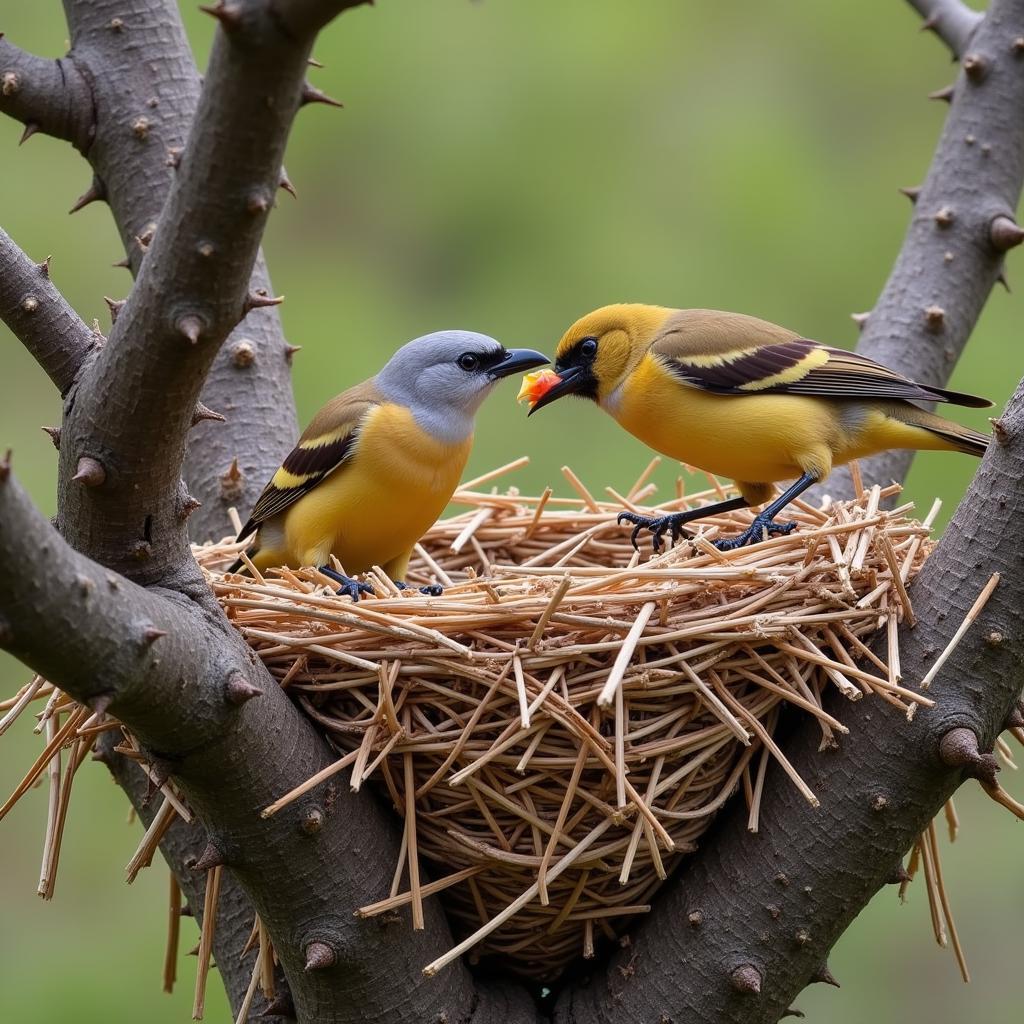The Charming African Silverbill: A Comprehensive Guide
The African Silverbill, a small but captivating finch, is a common sight across many parts of Africa. This article delves into the fascinating world of these little birds, covering everything from their habitat and diet to their social behavior and unique characteristics. Let’s explore the enchanting life of the African silverbill.
Unveiling the African Silverbill: Habitat and Distribution
The African silverbill, scientifically known as Euodice cantans, thrives in a variety of habitats across the African continent. From dry savannas and grasslands to arid scrublands, these adaptable birds have carved a niche for themselves in diverse environments. Their range stretches across sub-Saharan Africa, including countries like Senegal, Ethiopia, and Tanzania. They’re particularly drawn to areas with scattered trees and shrubs, which offer both foraging opportunities and shelter from predators. They are also seen frequently near human settlements, often taking advantage of bird feeders and spilled grains.
 African Silverbill Habitat
African Silverbill Habitat
Adapting to Diverse Environments: The Silverbill’s Resilience
African silverbills demonstrate remarkable adaptability to different environments. Their ability to thrive in arid regions stems from their efficient water conservation mechanisms and dietary flexibility. They can survive on limited water sources, often obtaining moisture from the seeds and insects they consume. This resilience allows them to inhabit regions where other bird species struggle to survive.
Decoding the African Silverbill’s Diet and Foraging Habits
These small finches primarily feed on seeds, particularly grass seeds. Their strong, conical beaks are perfectly adapted for cracking open tough seed husks. They also supplement their diet with insects, especially during the breeding season when protein-rich food is essential for raising their young. African silverbills forage in small flocks, often on the ground, meticulously searching for fallen seeds.
The Importance of Seeds in the Silverbill’s Diet
Seeds form the cornerstone of the African silverbill’s diet. Their preference for grass seeds plays an essential role in seed dispersal, contributing to the regeneration of grasslands and savannas. Dr. Amani Nkosi, an ornithologist specializing in African bird ecology, notes, “The African silverbill’s seed-based diet makes them an integral part of the ecosystem, playing a key role in plant reproduction and habitat maintenance.”
Exploring the Social Life and Breeding Behavior of African Silverbills
African silverbills are highly social birds, often seen in flocks that can range from a few individuals to several hundred. They communicate with each other through a series of soft chirps and whistles, maintaining constant contact while foraging and roosting. During the breeding season, they form monogamous pairs and build small, dome-shaped nests from grass and other plant materials.
Nesting Habits and Parental Care
African silverbills typically nest in trees or shrubs, carefully concealing their nests among the foliage. The female lays a clutch of 3-6 eggs, which are incubated by both parents. Once the chicks hatch, both parents share the responsibility of feeding and caring for them. Dr. Nkosi adds, “The cooperative breeding behavior of African silverbills highlights their strong social bonds and dedication to raising their offspring.”
 African Silverbill Nest
African Silverbill Nest
Conclusion: Appreciating the African Silverbill
The African silverbill, with its subtle beauty and intriguing behaviors, is a testament to the rich biodiversity of the African continent. From their adaptation to diverse environments to their intricate social interactions, these small finches offer a glimpse into the fascinating world of avian life. Learning about these often-overlooked creatures enhances our understanding and appreciation of the natural world. By understanding the role these birds play in their ecosystems, we can better appreciate the delicate balance of nature and the importance of conservation efforts.
FAQs about African Silverbills
-
What is the lifespan of an African silverbill? African silverbills typically live for 5-7 years in the wild.
-
Are African silverbills migratory? While some populations may exhibit local movements, African silverbills are generally considered resident birds.
-
What are the predators of African silverbills? Predators of African silverbills include snakes, raptors, and small mammals.
-
Are African silverbills kept as pets? While they are not as common as some other finch species, African silverbills are sometimes kept as pets in some regions.
-
What is the scientific name of the African silverbill? The scientific name of the African silverbill is Euodice cantans.
-
Where can I find more african finches photos?
-
What other African finches are related to the African silverbill?
For further assistance, please contact us via Phone: +255768904061, Email: kaka.mag@gmail.com or visit us at: Mbarali DC Mawindi, Kangaga, Tanzania. We have a 24/7 customer service team.




